Blogging Smarter, Not Harder: The Tools That Make the Magic Happen
Let’s not sugarcoat it—blogging today is an entirely different beast than it was a few years ago. Gone are the days when typing your thoughts into WordPress and hitting “Publish” was enough to stand out. Now? The digital space is crowded, competitive, and constantly shifting beneath our feet.best blogging tools
To thrive, not just survive, you need more than passion.
You need tools—smart, effective, time-saving tools—that take the heavy lifting off your plate and let your creativity flow.
Whether you’re just launching your blog or you’ve been grinding for years, this guide will walk you through the essential blogging tools of 2025 that can elevate your workflow from cluttered chaos to smooth, streamlined brilliance.
🖋️ 1. Write Like a Pro: Tools for Writing & Editing
✨ Grammarly
Let’s face it: nothing drains credibility faster than a typo in your headline. Grammarly isn’t just a spellchecker—it’s your digital writing assistant, whispering grammar fixes, stylistic tweaks, and clarity suggestions in your ear (politely, of course).
✂️ Hemingway Editor
Long, winding sentences might sound elegant in your head—but readers? They bail. Hemingway highlights the fluff and hands you back something punchier, clearer, and 10x more readable.
🧠 Google Docs
Draft, collaborate, share, edit—all in real-time. Google Docs is the virtual notepad of the modern writer, letting you co-create or solo-flow from anywhere with Wi-Fi.
🚀 2. Climb the Ranks: Tools That Supercharge Your SEO
🧭 Yoast SEO
If you’re on WordPress, Yoast is practically a rite of passage. It breaks down your post’s SEO performance like a digital coach—suggesting improvements for readability, keyword density, meta tags, and more.
🔍 Ahrefs
Want to know what your competitors are ranking for? Curious where your backlinks are coming from? Ahrefs has answers. It’s an all-seeing eye for keyword research and SEO strategy.
📊 SEMrush
Think of SEMrush as a digital marketing Swiss Army knife: keyword insights, SEO audits, trend tracking, content ideas, even social media analytics—all in one sleek dashboard.
🧠 3. Organize the Chaos: Planning & Content Management Tools
🗂️ Trello
Sticky notes? Nah. Trello turns your blogging to-do list into a visual wonderland. Boards, cards, labels—it’s like project management that actually sparks joy.
🧩 Notion
Part planner, part database, part creative playground. Notion is what happens when Google Docs meets Trello and they fall in love. Use it to organize content calendars, research, and even your entire blog strategy.
✍️ Evernote
Your brilliant blog idea will strike—at 3 a.m., in the shower, or while ordering coffee. Evernote helps you catch it before it disappears into the void.
🎨 4. Visuals That Pop: Tools for Design & Eye Candy
🖌️ Canva
Zero design skills? Zero problem. Canva gives you plug-and-play templates for blog graphics, infographics, pins, and more. It’s beginner-friendly and ridiculously addictive.
🔥 Adobe Spark
Need something more dynamic than static images? Spark lets you whip up gorgeous video clips and animated visuals, perfect for grabbing attention on social feeds.
📸 Unsplash & Pexels
Stock photos have come a long way. These two platforms serve up high-resolution, royalty-free images that feel authentic, not cringe.
🌐 5. Where the Magic Lives: Blogging Platforms
🏆 WordPress
It’s robust. It’s customizable. It powers a massive chunk of the internet. If you want full control and scalability, WordPress is still the king.
💡 Squarespace
Not into coding? Squarespace offers sleek, professional templates with drag-and-drop simplicity. Great for creators who want style without tech headaches.
✍️ Medium
Medium is minimal, elegant, and has a built-in reader base. Perfect for thought leadership, storytelling, and personal essays—just don’t expect deep customization.
📈 6. Know What Works: Analytics & Tracking Tools
📉 Google Analytics
How many people read your blog last month? Where did they come from? What did they click? If you don’t know, you’re guessing. Google Analytics lays it all out—cold, hard, data.
🔎 Google Search Console
Behind-the-scenes SEO intel. GSC helps you see how Google views your site, find indexing issues, and optimize your posts to improve search visibility.
🔥 Hotjar
Want to know how visitors actually experience your site? Hotjar shows you heatmaps, click patterns, and scroll behavior so you can tweak your layout for maximum impact.
📢 7. Share Like a Pro: Social Media Management Tools
⏰ Buffer
Create, schedule, and publish your posts across platforms without logging into ten different apps. Buffer is clean, efficient, and saves you from content calendar chaos.
🧭 Hootsuite
Robust and enterprise-friendly, Hootsuite lets you manage mentions, monitor trends, and analyze social media performance—all in one control center.
📌 Tailwind
If Pinterest or Instagram are core to your strategy, Tailwind is essential. It optimizes your posting schedule and helps you grow visually-driven traffic with less effort.
📬 8. Nurture Your Tribe: Email Marketing Tools
💌 ConvertKit
Made with bloggers in mind, ConvertKit lets you build drip campaigns, segment lists, and create clean, clickable emails that don’t feel like spam.
📢 Mailchimp
The OG of email marketing. Mailchimp is beginner-friendly and powerful enough for growing lists, crafting automated sequences, and tracking open rates like a hawk.
💡 Final Thoughts: Let the Tools Work For You
Trying to blog without tools in 2025 is like trying to build a house with your bare hands. Sure, it’s possible—but why struggle? Whether you’re a wordsmith, a strategist, a designer, or all three, the right tools don’t just help—they transform.
Experiment. Combine. Refine. Find your perfect tech stack, and let it amplify your creativity instead of replacing it.
Blog smarter. Blog bolder. And let 2025 be your breakthrough year.
💬 FAQs
Q1: Are paid blogging tools really worth it?
Absolutely. The time and headaches they save often pay for themselves—especially when it comes to SEO and email automation.
Q2: Can I blog without using SEO tools?
Technically? Yes. Strategically? Not a good idea. SEO tools help you get discovered in the noisy digital crowd.
Q3: I’m bad at design. Which tool should I use?
Start with Canva. It’s built for non-designers and comes with gorgeous templates ready to go.
Q4: How often should I check blog analytics?
At least monthly. More if you’re running campaigns or launching new content. Numbers don’t lie—they guide.
Q5: Can I handle blogging and social media with one app?
Some tools like Hootsuite or Buffer can cover both, but for deep blogging tasks, you’ll likely need a few specialized tools too.
Would you like this formatted into a downloadable blog post, or adapted further for SEO?
Please don’t forget to leave a review.
Explore more by joining me on abdallablog


